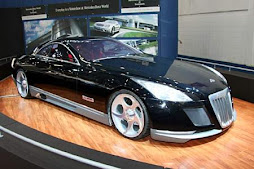HA’AWINA ‘ELIMA – Lesson Five
Papa'ölelo
A hui hou - see you later
leka - letter
'au - to swim
mä - and company, gang, et al
'au kai - to swim in the sea
mea 'ai - food
hale - house
moana - ocean
hale pule - church
moe - to lie down
hele - to go, come
'ö - there (distant)
hele aku - to go (away)
papa - class
hele mai - to come
pau - to finish, complete
kahakai - beach
po'e - people
kai - sea
püne'e - couch, sofa
lä - [particle translated as "then"]
wela - hot
Mä: mä in Hawaiian immediately follows an i'oa (proper noun). It is normally translated as "them" or "guys" in Pidgin. Hele 'o Manu mä i ka hale pule - Manu guys go to church.
Ka mäka painu ua (past tense) - To form the past tense you add ua directly in front of the verb.
(PAST TENSE) ua + po'o + piko + 'awe (if there is one)
Ua 'ai ka pöpoki i ka mea 'ai - The cat ate the food
Ua 'au wau i ke kai - I swam in the sea
Ua hele mai ke kumu i ke kula - The teacher came to the school
Ua pau ka papa - The class was finished
'ami ma and multiple 'awe The 'ami ma can also be used in place of i. They both mean "in, on," and "at". Ma is more specific than i and i also means "toward" and is usually used with verbs of movement.
Ua + po'o + piko + 'awe
Ua noho au ma Kualapu'u - I lived in Kualapu'u
Ua moe 'o mämä ma ka püne'e - Mom lay on the couch
Just like a he'e, a Hawaiian sentence can have multiple 'awe. An 'awe usually begins with: 'ami i or ma followed by a ka'i: këia, këlä, kënä ke, ka, nä
Ua + po'o + piko + nä 'awe
Ua käkau ka haumäna i ka ha'awina i ke kula - The student wrote the lesson in school
Ua 'ai ka pöpoki i ka mea 'ai ma 'ö - The cat ate the food over there
Ua hele au i ka hale pule i Hawai'i - I went to the church in Hawai'i
ka mäka painu: e painu ana (future tense/progressive) The pattern for forming sentences to indicate future tense is as follows: po'o e + [painu/verb] + ana This pattern is used to show that the action is not complete. Either it is still going on (progressive), or it hasn't even started (future).
po'o + piko + 'awe
e hele ana ka po'e i kahakai – “the people will go to the beach” or “the people are going to the beach”
e käkau ana wau i ka leka – “I will write the letter” or “I am writing the letter”
Päpä'ölelo
Manu: E Keoki, e hele ana 'oukou i kahakai? Hey Keoki, are you guys going to the beach?
Keoki, Pi'ikea, Lehua: 'A'ole, e hele ana mäkou i ke kula i këia lä. No, we're going to school today.
Manu: No ke aha lä? He lä wela ia. Why? It's a hot day.
Keoki mä: E käkau ana mäkou i kekahi mau leka i nä mäkua. He hä'awina ia. We're going to write some letters to the parents. It's a lesson.
Manu: Ua pau ka'u mau papa. E hele ana au i kahakai. E 'au kai ana au. A hui hou! My classes are finished. I'm going to the beach. I'm going to swim. See you later.
Negative 'a'ole To form the negative, 'a'ole comes first. Depending on what tense you are speaking in, there are various patterns. If there is a papani in the piko, then the papani immediately follows 'a'ole followed by i then the painu (verb). If the piko has no papani, then 'a'ole is immediately followed by i then the painu.
hele ka wahine
'a'ole hele ka wahine
ua hele ka wahine
'a'ole i hele ka wahine
hele au
'a'ole au hele
'a'ole i hele au
'a'ole au i hele
Päpä'ölelo
Kalanialoha: Hui e Ku'uleialoha, ua hele 'oe i ke kula i këia lä? Hey Ku'ulei, did you go to school today? Ku'uleialoha: 'A'ole. 'A'ole au i hele i ke kula i këia lä. No. I didn't go to school today.
Kalani: Hele 'oe i kahakai? Are you going to the beach?
Ku'ulei: 'A'ole au hele i kahakai. I'm not going to the beach.
Kalani: Ua 'ai i ka mea 'ai i ka hale pule? Did you eat the food at the church?
Ku'ulei: 'A'ole, 'a'ole au i 'ai i ka mea 'ai. No, I didn't eat the food.
Sentence Construction learned so far
po'o + piko + 'ami + ka'i + 'awe
painu ua
painu e
painu ana
he/'o kikino papani
i'ao: i, ma, iä, ka, ke, këlä, kënä, ko'u, kou, (no ka'i) kikino papani/i'oa
Note: the 'ami and ka'i are part of the 'awe, but in the diagram above they are shown separately to show all the necessary parts of a Hawaiian sentence. Also, the subject may be dropped, if understood.
Marlon muebeitoa yu ajue beisie.
Let's learn a foreign language!
segunda-feira, 25 de maio de 2009
Assinar:
Postar comentários (Atom)
















Nenhum comentário:
Postar um comentário